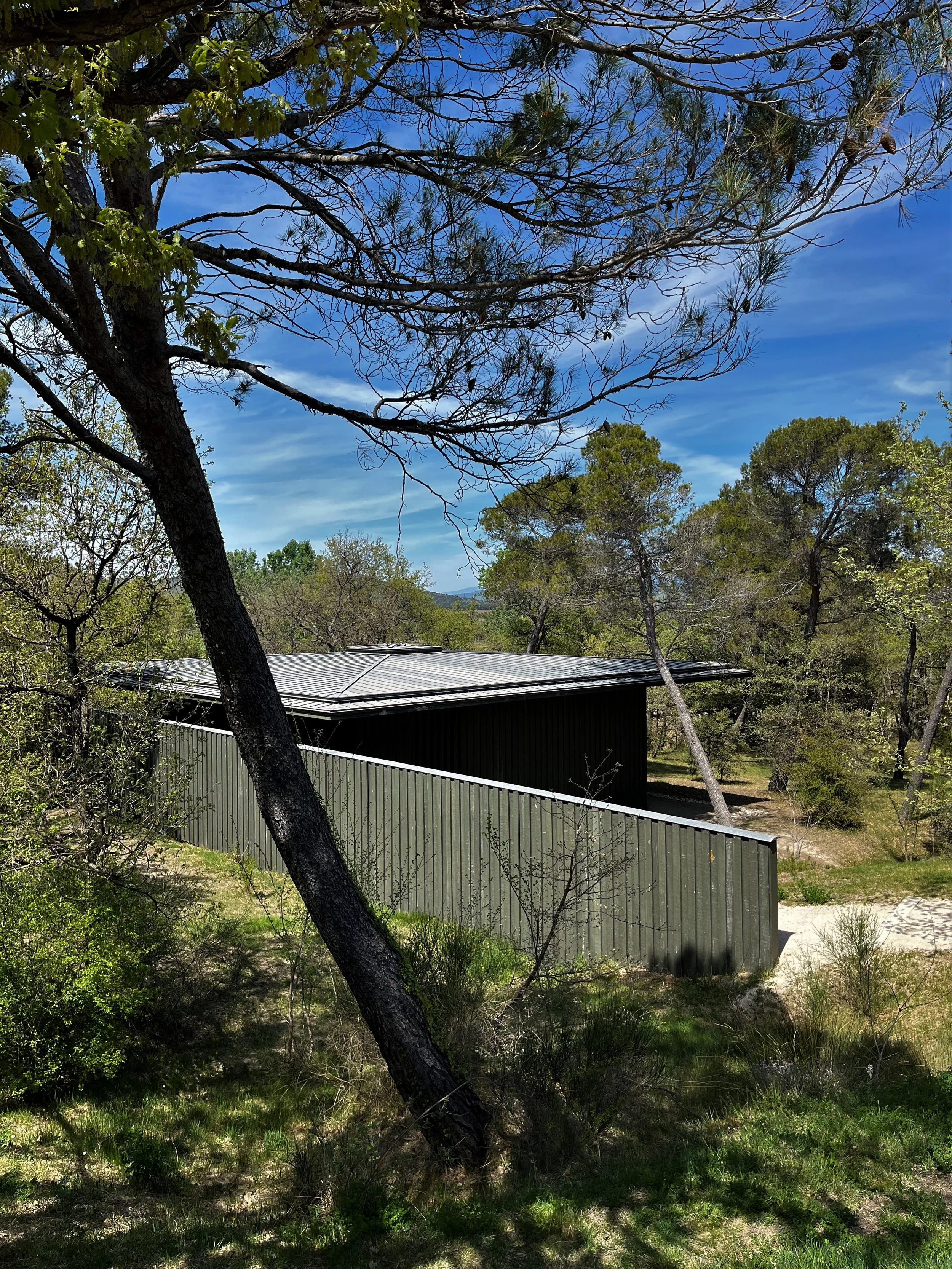Château La Coste, pt I
Contemporary art and architecture amidst vineyards, defined by Tadao Ando’s concrete signature
Crouching Spider - Louise Bourgeois (2003).
For this Cultuurtoerist, Château La Coste feels like the closest to paradise on Earth. In this 200-hectare nature reserve with vineyards and pine trees, one can discover numerous art installations, sculptures, pavilions, galleries, a wine tasting room, and restaurants. The domain near Aix-en-Provence features installations by acclaimed architects like Jean Nouvel, Frank Gehry, and Oscar Niemeyer, as well as notable artists such as Louise Bourgeois, Richard Serra, and Lee Ufan. What is the story behind this secluded location, showcasing the summit of contemporary art?
In 2002, the estate was purchased by Irish entrepreneur Paddy McKillen. The businessman immediately had a clear vision for the domain, driven by his passion for sculptures and art. Château La Coste would become a place where art installations and architecture harmonize with the undulating landscape. To bring this vision to life, McKillen reached out to Japanese architect Tadao Ando, renowned for his mastery of concrete and geometric lines.
Ando readily took on the project, inspired by the location near Aix-en-Provence in southern France. Major sources of inspiration for his own work can be found close to Château La Coste. Le Corbusier’s ‘Unité d'Habitation’, the foundation of modern architecture and Brutalism, and the historic Abbaye de Sénanque, which resonates with Ando due to its purity and natural light, are both within close proximity.
Ando designed the master plan for the entire estate, with various art installations and pavilions seemingly arranged randomly within the landscape. This allows each artwork to speak for itself while respecting the natural beauty of the surroundings. There is minimal signage on the grounds, so visitors can explore freely. Additionally, the development of Château La Coste continues to evolve, with new works and pavilions continuing to be added over the years. My first visit to La Coste was in 2019, and since then, at least five new installations have been added, with several more structures still under construction.
In addition to the master plan, Ando also designed the entrance gate, the art center, a chapel, a pavilion with a permanent installation, and benches throughout the estate.
For the entrance gate and the Art Center—housing an information point, restaurant, bookstore, and parking—Ando used his signature sleek concrete walls, which will excite any fan of Brutalism. Notably, his use of concrete columns extending deep into the vineyards subtly draws attention to the surroundings, as Ando never intends for his work to overshadow the landscape. The Art Center is surrounded by three water features, each hosting a sculpture. Crouching Spider by Louise Bourgeois floats above the water at the front, along with Small Crinkly by Alexander Calder (the first artwork to be placed at Château La Coste) and a geometric sculpture by Hiroshi Sugimoto.
As you approach the Chapel, it is immediately evident that it was designed by Ando. The location of the Chapel is surrounded by his signature concrete walls, with a large red crucifix by French artist Jean-Michel Othoniel offering a stark contrast. The ruins of an old chapel already present on the site are enveloped in a structure made of glass and steel. Upon entering the chapel, the darkness takes a moment to adjust to. Ando placed a steel plate atop the chapel, which just misses the walls, allowing natural light to filter in only through the edges of the ceiling. This simple yet brilliant design gives the Chapel its pure and serene appearance.
Hidden in the wooded area of the estate is Ando's Pavilion "Four Cubes to Contemplate our Environment." This temple-like building, unlike most of Ando’s work, is made of dark wooden planks. Everything about this pavilion exudes mystery and darkness. When you pass through the dark entrance, four illuminated glass cubes are revealed inside. These cubes, previously exhibited at the Kennedy Center in Washington DC, have found their permanent home here. Each cube represents one message: carbon dioxide, water, waste, and air. With this simple yet direct method, Ando invites quiet reflection on the impact of pollution and consumerism on the environment.
There are few resting spots along the art installation path, literally in the form of benches where you can take a break from walking and absorbing the works. There are exactly two seating areas, but of no ordinary kind. These are two origami-inspired benches designed by Ando. As the name suggests, they are inspired by Japanese paper folding art. The concrete version provides visitors with a shaded spot to rest. A nice detail is the triangle carved from the top wall. Did I mention that Ando and geometry go hand in hand?
It is evident that Ando has left his signature on Château La Coste, yet the contributions of other artists and architects are equally significant. What makes La Coste truly special is how each installation has its own voice while seamlessly blending with the other works and the surrounding landscape.
Origami bench - Tadao Ando.
Château La Coste - 2750 Route De La Cride, 13610LE Puy-Sainte-Réparade, France.
Photos (c) Cultuurtoerist.










